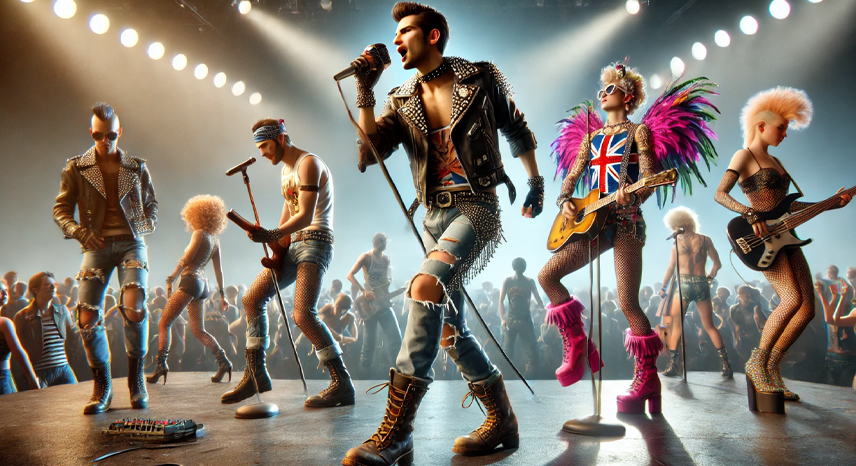From Sci-Fi to Reality: Emerging Tech That’s Blowing Minds

For decades, we’ve watched futuristic tech light up the big screen—from talking robots to neural implants, teleportation devices, and virtual dreamscapes. But here’s the kicker: a growing number of these once-unthinkable gadgets and systems are no longer fiction. They're real, they're here, and they’re changing the game in ways we never imagined.
Welcome to 2025, where the lines between science fiction and reality are officially blurred.
1. Brain-Computer Interfaces (BCIs)
The Thought-Controlled Future
Brain-computer interfaces have leapt out of dystopian thrillers and into the lab—and now into consumer tech. BCIs allow users to control digital devices using only their thoughts, thanks to non-invasive neural sensors and advanced AI processing.
Real-World Use Cases
- Neuralink (yes, Elon Musk’s company) has begun human trials
- BCIs are helping patients with paralysis control prosthetics and even type messages
- Developers are now working on thought-driven gaming and smart home control
Sci-Fi Meets Real Life
This is the same concept we saw in films like The Matrix or Ghost in the Shell, but now it's powering real human-machine symbiosis.
2. AI Companions with Emotional Intelligence
Not Just Chatbots Anymore
In 2025, AI isn’t just a cold assistant—it’s a responsive, emotionally intelligent companion. These AI entities can hold meaningful conversations, read your emotional state, and adapt their responses to your mood.
What’s New
- Platforms like Replika 3.0 and xAI’s new assistant use sentiment analysis and personality models
- They act as therapists, friends, or productivity coaches
- Some versions include holographic avatars for more lifelike interaction
Think: Her (2013 film) in real life—but in your pocket.
3. Holographic Displays and 3D Telepresence
Video Calls Just Got an Upgrade
Say goodbye to Zoom fatigue. Holographic displays now allow users to project full 3D versions of themselves into virtual meetings or even living rooms.
How It Works
Using advanced LiDAR sensors and volumetric capture, your likeness is beamed into a room like a true hologram. It's becoming increasingly popular in:
- Telehealth
- Business meetings
- Education and remote learning
Seen Before?
This one’s ripped right out of Star Wars and Iron Man—except now it's being used to pitch products, teach classes, and host virtual events.
4. Smart Contact Lenses
Augmented Reality in Your Eye
Forget headsets—AR has gone micro. Smart contact lenses now embed tiny displays and sensors directly onto your eye, enabling a heads-up display (HUD) without the bulk.
Who’s Leading the Charge?
- Mojo Vision is testing AR lenses with fitness tracking and live overlays
- InWith Corp has developed lenses that sync with smartphones
Why It Matters
These lenses allow real-time translation, navigation, and health monitoring, all while looking completely natural. It's straight out of Black Mirror, only less terrifying (so far).
5. Quantum Computing for the Masses
Processing Power Beyond Imagination
Quantum computers were once the stuff of ultra-secret government projects and sci-fi dreams. But 2025 has seen the arrival of quantum-powered cloud services accessible to developers and businesses.
What Can It Do?
- Break complex encryption in seconds
- Simulate molecules for drug discovery
- Solve logistics and optimization problems exponentially faster than traditional systems
Accessible Platforms
- IBM Q Experience
- Google Quantum AI
- D-Wave Leap
This is Star Trek-level tech now available from your web browser.
6. Bionic Limbs with Sensory Feedback
A New Era in Prosthetics
Prosthetic limbs can now not only move naturally via neural input—they can also "feel." Sensory feedback systems allow users to experience touch, pressure, and even temperature through their artificial limbs.
The Tech Behind It
Neurostimulators and smart skin sensors send signals back to the brain, giving users a near-natural sensation.
Seen in Sci-Fi
From Deus Ex to I, Robot, this idea has always fascinated storytellers—now, it’s giving amputees life-changing independence.
7. Self-Healing Materials
Machines That Fix Themselves
Inspired by biology, new synthetic materials in gadgets, robots, and wearables can now self-repair when scratched, cut, or broken—no technician needed.
Key Applications
- Smartphone screens that heal scratches overnight
- Wearables with skin-like flexibility and recovery
- Aircraft and automotive components that seal cracks mid-flight
The Real Science
These materials use microcapsules or reversible chemical bonds that reform when triggered by heat, light, or even pressure.
Sci-fi predicted this in films like Terminator 2. In 2025, it’s in your backpack.
8. Hyperloop and Autonomous Transport Pods
High-Speed Travel, Reimagined
Elon Musk’s Hyperloop isn’t just a concept anymore—it’s being piloted in several countries. These vacuum-tube trains travel at near-supersonic speeds with zero emissions.
Complemented by…
- Self-driving transport pods in cities like Dubai and Singapore
- Drone taxis for short-range air travel
Reality Check
This might be the closest we’ve come to Fifth Element-style urban mobility.
9. Emotion-Sensing Wearables
Know How You Feel—Before You Do
Wearables now track more than just your heart rate. They analyze your facial micro-expressions, voice tone, and physiological markers to detect emotional states like anxiety, joy, or stress.
What They’re Used For
- Mental health monitoring
- Performance coaching
- Workplace wellness
Devices like Empatica E4 and Affectiva’s emotion AI are breaking new ground in biometric empathy.
10. Digital Twins of Yourself
Your Virtual Doppelgänger
Imagine a fully interactive, AI-powered version of you existing in a virtual environment. In 2025, “digital twins” are being used for everything from fitness coaching to digital immortality projects.
What Can It Do?
- Train with you in VR
- Interact on your behalf in metaverse meetings
- Preserve your memories and voice for future generations
This is Ready Player One meets Black Mirror, with a dash of Altered Carbon.
Final Thoughts
It’s no exaggeration to say we’re living in an era that past generations could only dream of. The tech emerging in 2025 doesn’t just improve our tools—it redefines what it means to be human. From brain-machine links to emotionally intelligent AI and synthetic materials that heal themselves, we’re watching science fiction become science fact.
And this is just the beginning.
post

Lifestyle ≠ 28 October
Fashion and Wellness: How What You Wear Can Affect Your Health

Lifestyle ≠ 28 October
Future of Fashion: Exploring the Role of AI and Virtual Reality in Style

Lifestyle ≠ 28 October
The Intersection of Fashion and Music: Style Influences from Iconic Artists

Lifestyle ≠ 28 October

Lifestyle ≠ 28 October
Previous Post
GADGETS AND TECH October 28
Gear That Fuels Remote Life
Next Post
No Next blog available.
